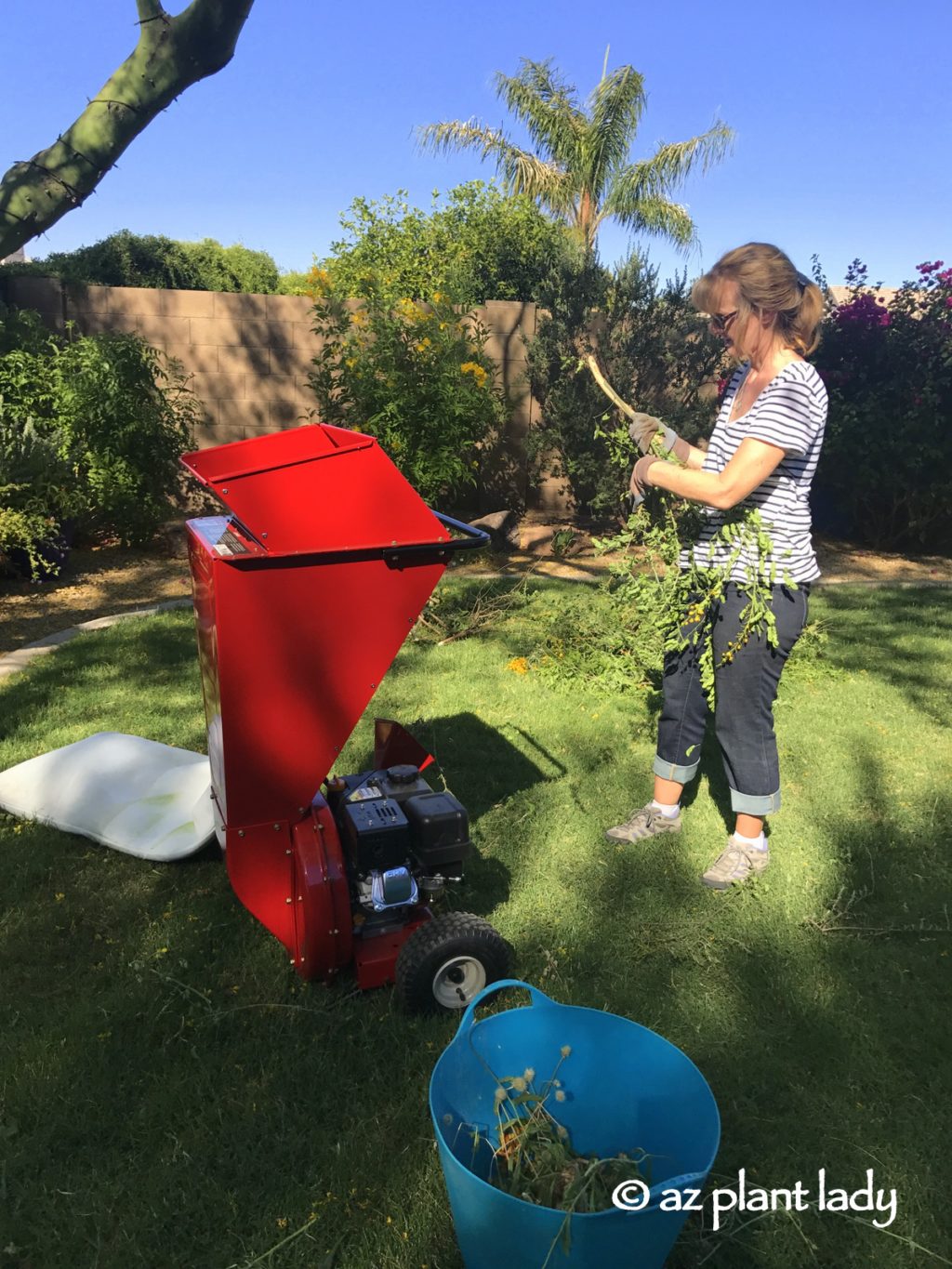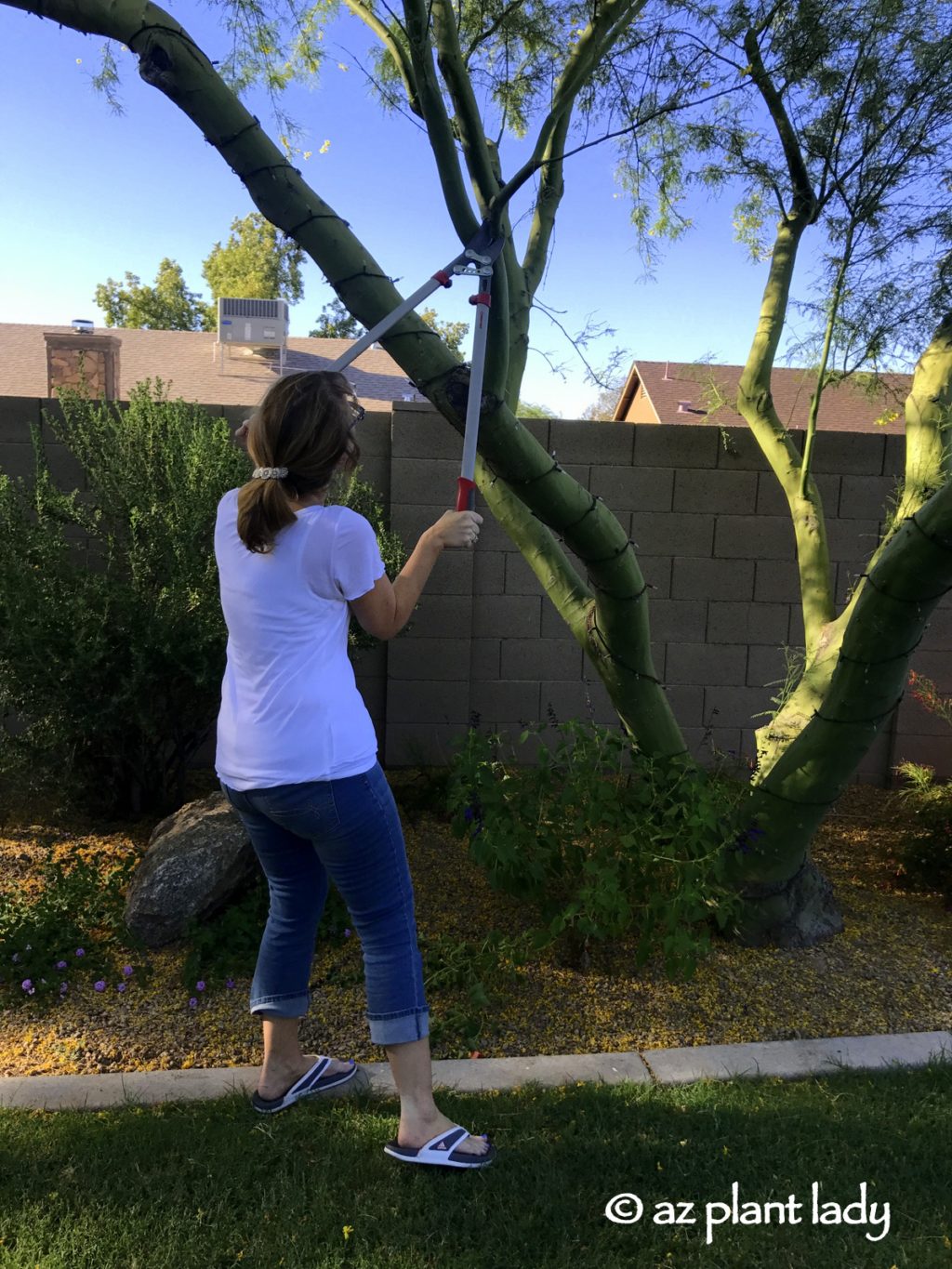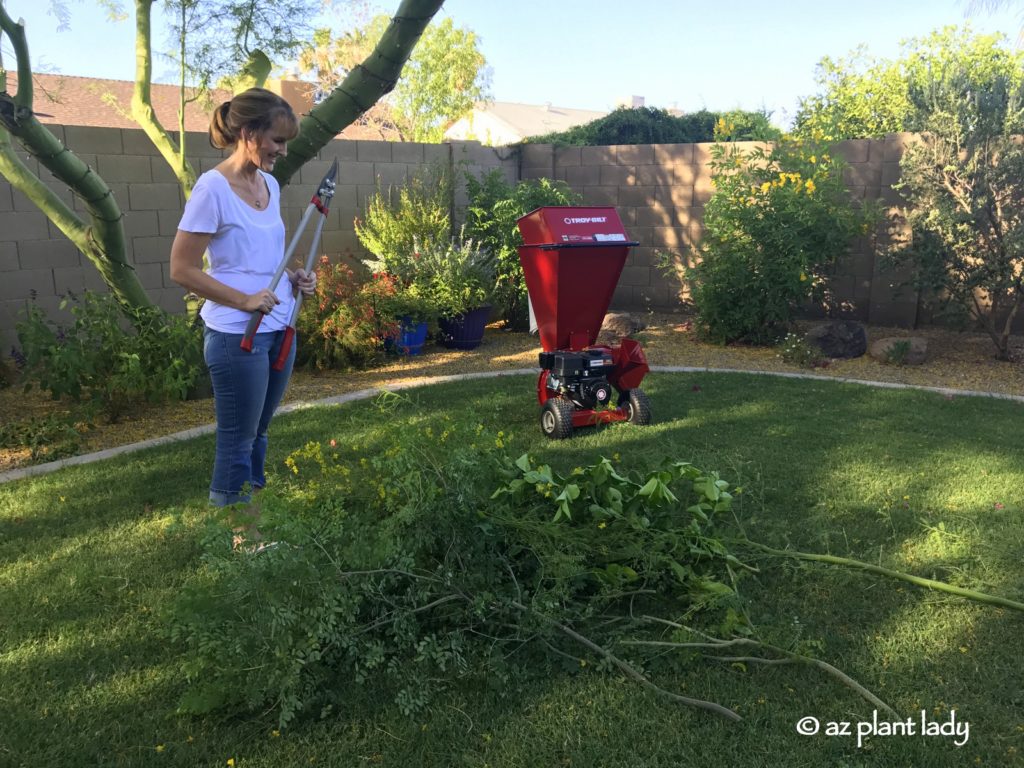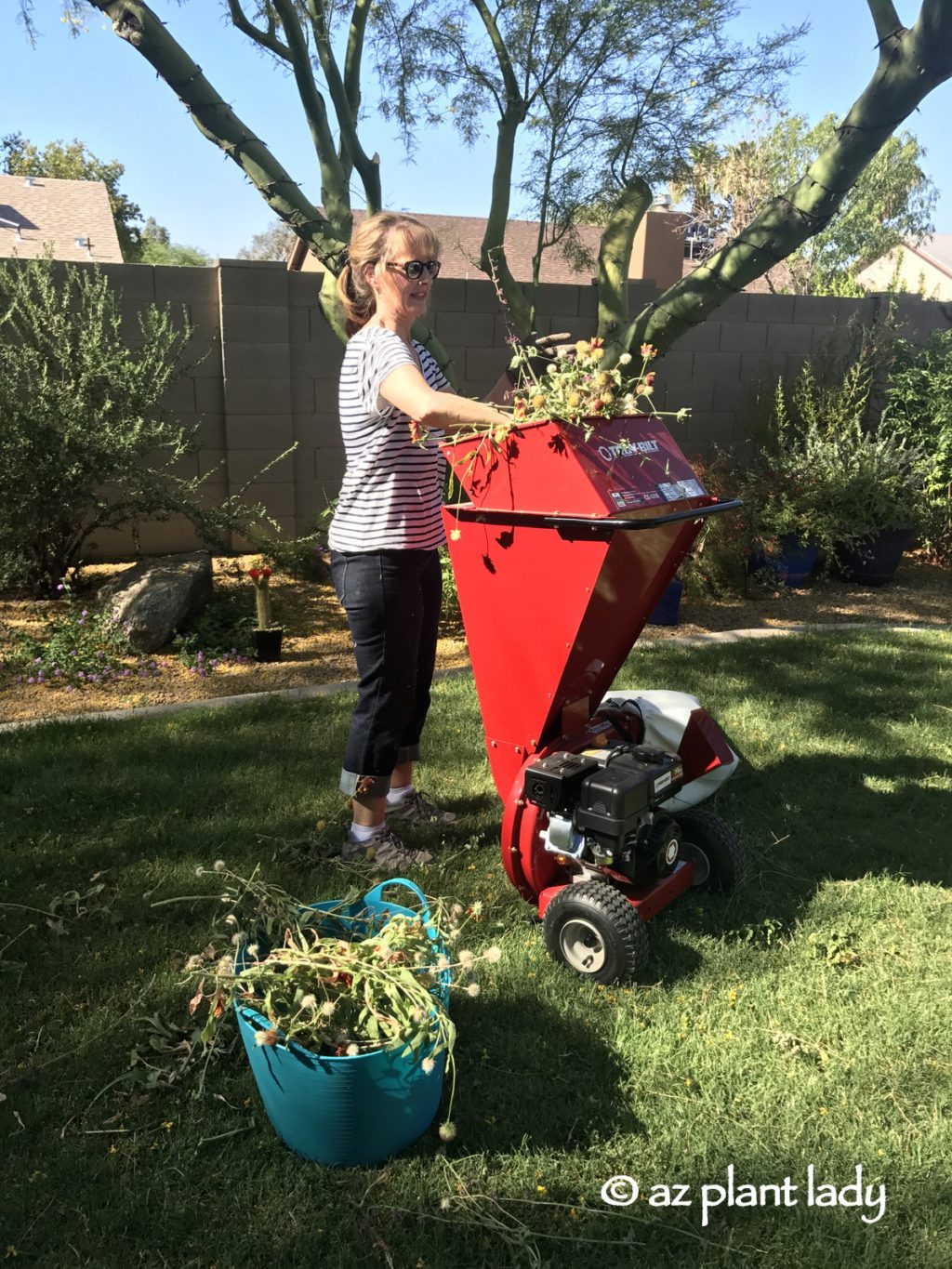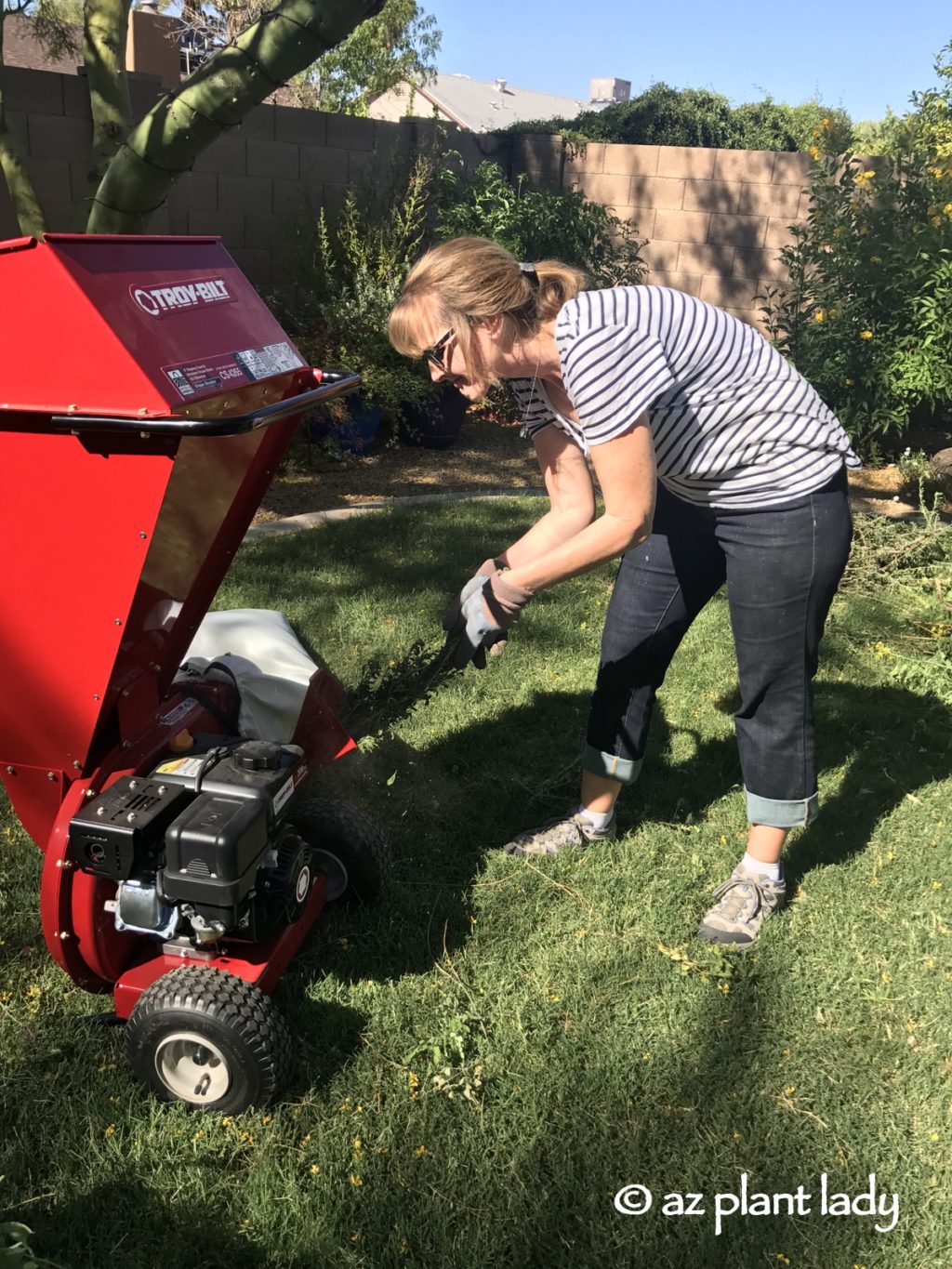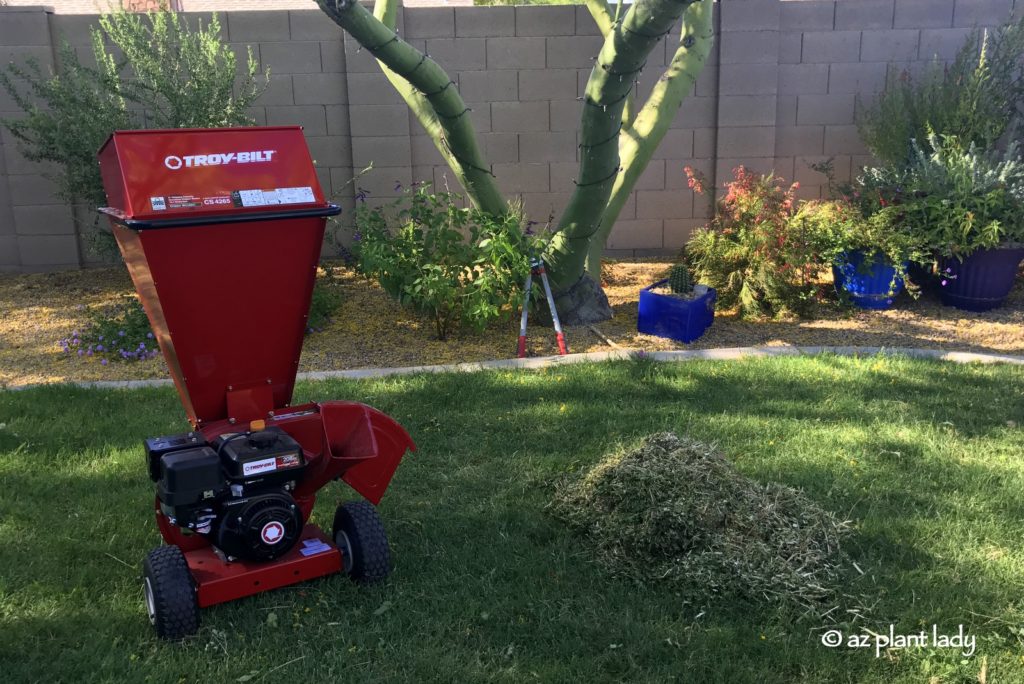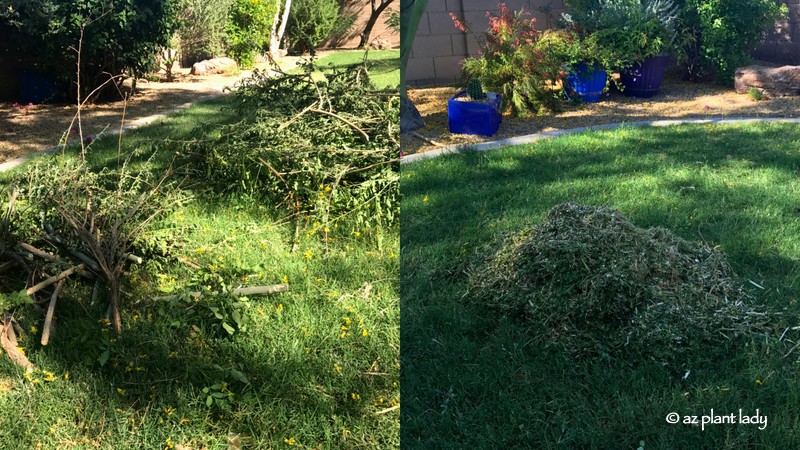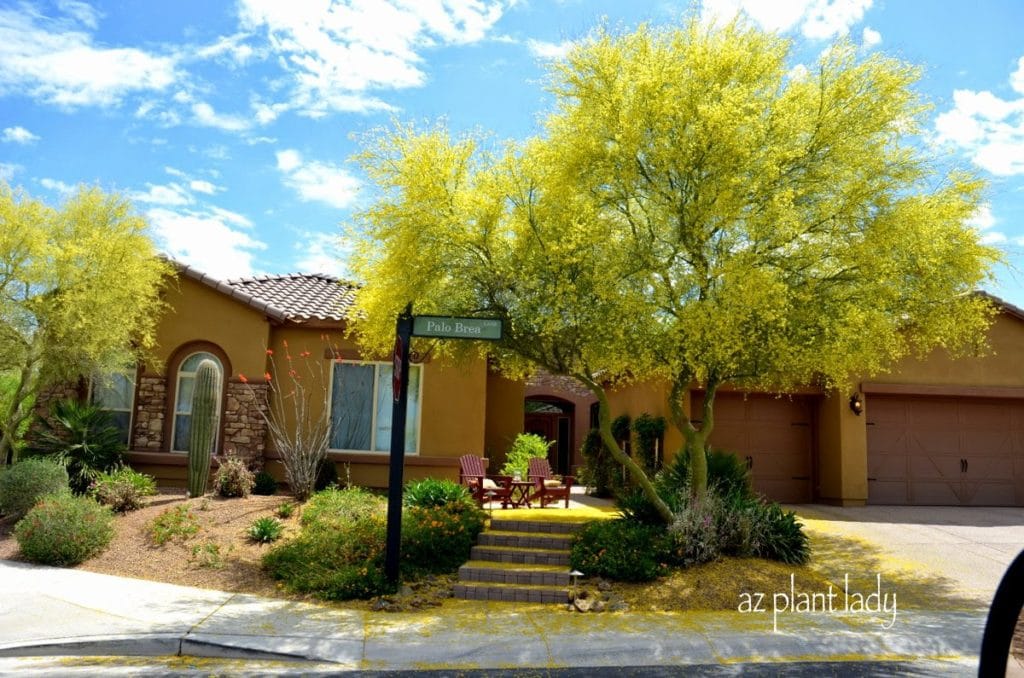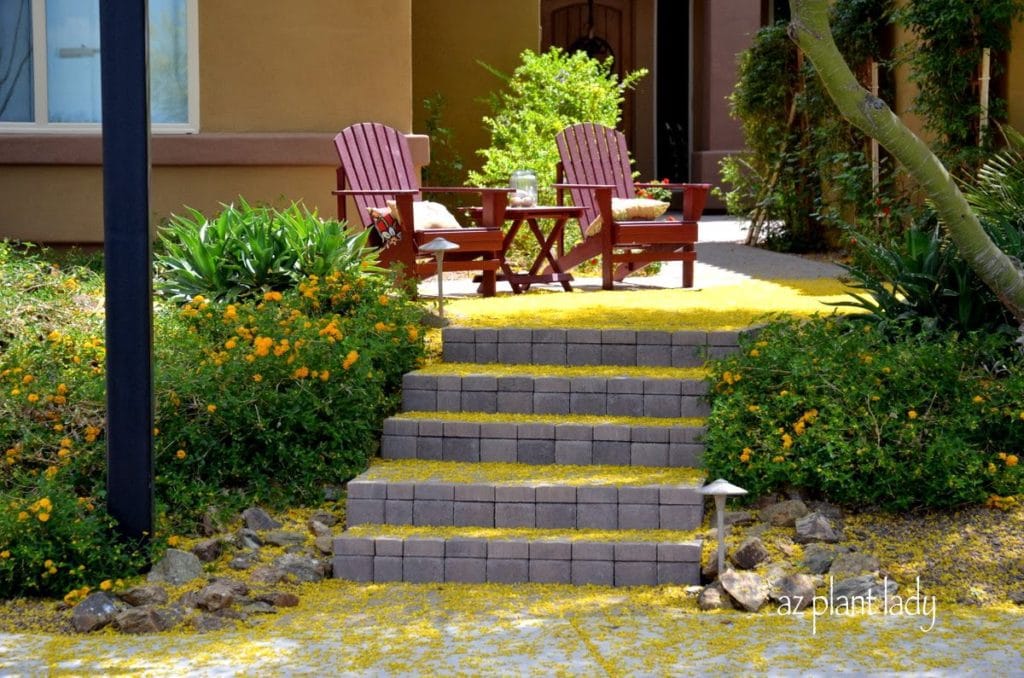Preparing Your Garden for a Heatwave: 5 Essential Tips
Have you ever wondered how your plants fare in the scorching heat of summer? Is your garden equipped to withstand the punishing temperatures that a heatwave can bring, whether you reside in the arid desert Southwest or more temperate regions? In this guide, we’ll explore how to create a heatproof garden that thrives even during the hottest days of summer.
What do your plants look like in the middle of summer? Do they thrive despite the hot temperatures?
Or do they look more like this?
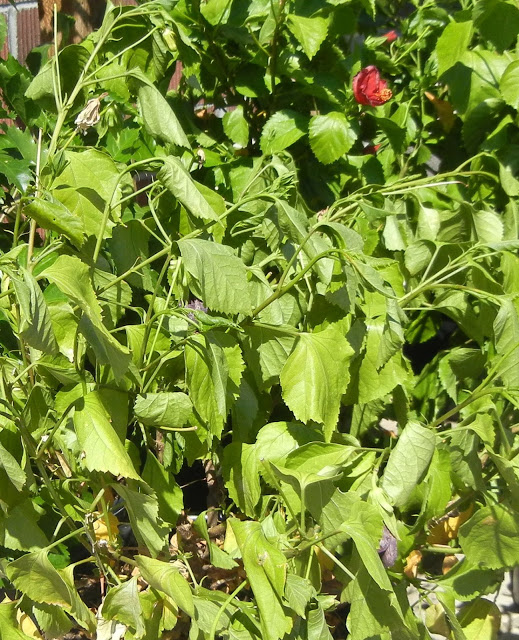
Assessing Your Garden’s Heat Tolerance
Before we dive into our tips for heatproofing your garden, it’s crucial to understand how to recognize the signs of heat stress in your plants. During the hottest part of the day, take a stroll through your garden and keep an eye out for wilting leaves, as well as leaves turning yellow or brown – all telltale signs of heat stress.
5 Key Strategies to Heatproof Your Garden
Here are five essential strategies to help your garden not only survive but thrive in the face of scorching summer temperatures:
1. Embrace Native and Climate-Adapted Plants
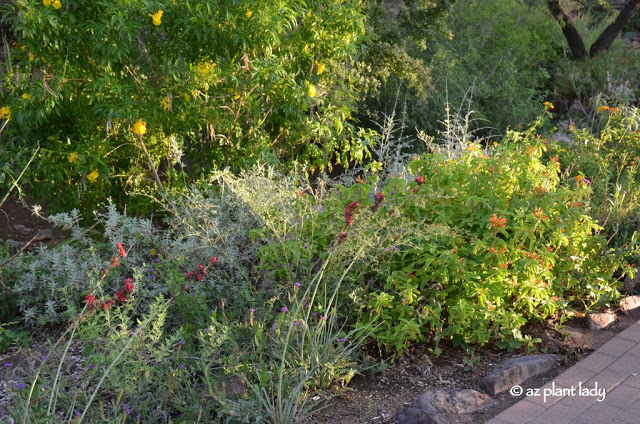
Selecting native or climate-adapted plants is a foundational step in creating an attractive, low-maintenance landscape that remains beautiful year-round. These plants possess unique characteristics that enable them to withstand local climate conditions, including extreme summer heat. Learn how plants like Langman’s Sage and Mexican Honeysuckle adapt to thrive in the heat.
All too often, we find ourselves with landscapes filled with plants. These plants often have large leaves and struggle to survive the hot, summer months. This results in unattractive plants that we work hard to help sustain them until cooler temperatures arrive. Usually, these plants are best meant to grow in climates with less extreme heat.
Plants Adapt to Change
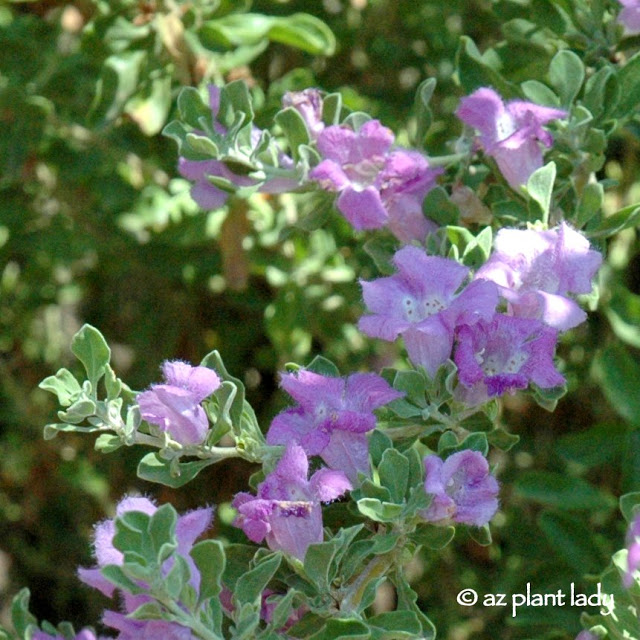
Langman’s Sage (Leucophyllum langmaniae)
Let’s look at an example of an adaptation that this Langman’s sage. The adaptation enables it to handle full sun and 110+ temperatures without undue stress.
Notice that the flowers have small hairs. So do the leaves, giving them a slightly grayish cast. These tiny hairs help to reflect the sun’s rays, which lowers the temperature of the leaves and flowers.
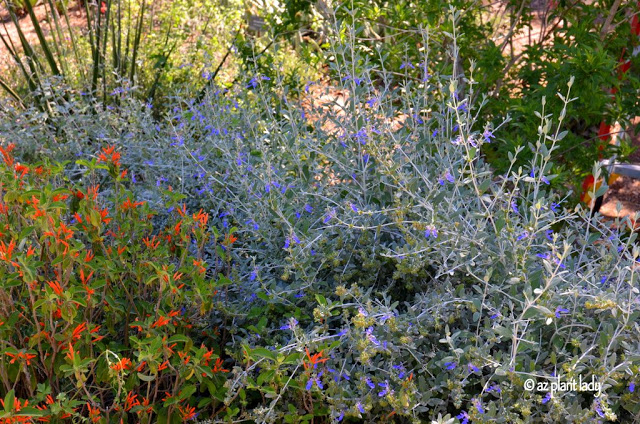
Mexican Honeysuckle (Justicia spicigera) and Shrubby Germander ‘Azurea’ (Teucrium fruticans ‘Azurea’)
Small Leaves Help
Another way that plants have to handle the heat is by having small leaves. This limits the amount of water lost, which helps them to deal with hot, dry temperatures.
Here in the desert Southwest, there are many native plants that are used. There are also plants from Australia and other arid regions, which have similar climates.
2. Harness the Power of Shade
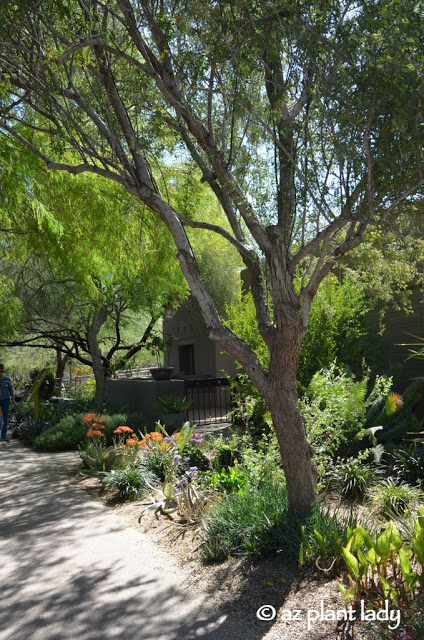
Introducing shade into your garden offers respite from the relentless sun, benefiting both plants and your home’s overall cooling. Discover how to provide just the right amount of shade by strategically planting trees that offer filtered shade. This allows enough sunlight for other plants to flourish.
3. Master the Art of Deep and Infrequent Watering
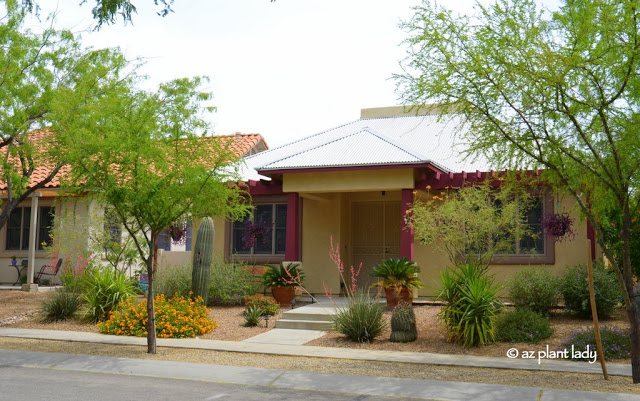
Plants need water to survive, and not surprisingly, they need the most in the summer. However, we often water them too often and shallowly for it to do much good.
Shallow watering keeps roots close to the surface of the soil. There the soil temperatures are hot and the water dries up quickly.
Deep Watering is the Rule
Water is essential for your plants, especially during summer, but not all watering methods are created equal. Learn why deep watering, encouraging deep root growth, is far more effective than shallow watering. Discover how to gauge the depth of your watering and why early morning is the best time to hydrate your plants.
“Plants that are watered deeply and infrequently are better able to withstand the heat.”
Shrubs should be watered to a depth of 2 feet and perennials and groundcovers to 18 inches. You can determine how deeply you are watering by inserting a piece of rebar down into the soil (right after you have finished watering) to see how long you need to irrigate. On average, 2 hours is the length of time to irrigate to the desired depth.
An Online Course to Help You Understand Desert Garden Needs
In my online class, Desert Gardening 101, I teach my students that watering deeply is as important as the time of day that you water. The best time to water is early in the morning. Watering plants in the afternoon is not as useful since plants allocate their resources at that time toward surviving the stresses of the heat and so they do not take up water as efficiently.
4. Mulch for Cooler Soil and Moisture Conservation
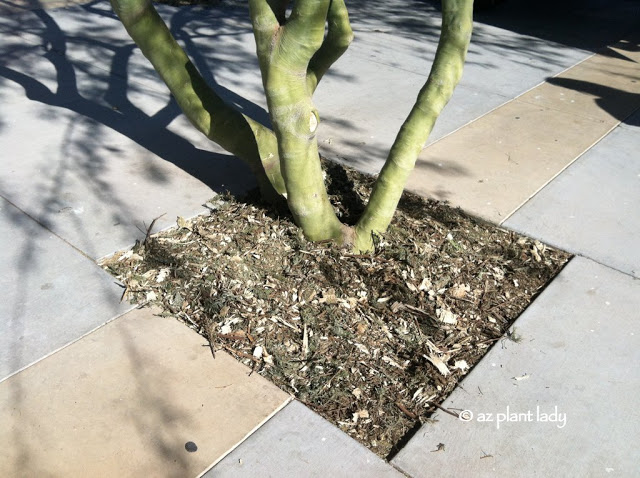
Mulch plays a crucial role in heatproofing your garden. It helps regulate soil temperatures, keeping them cooler during the summer while conserving moisture – essential for plant health. Explore unconventional mulch options, including fallen leaves, pine needles, and even fallen flowers, and learn how they can enhance your garden’s well-being.
A bonus is that they also help to prevent weeds from taking root.
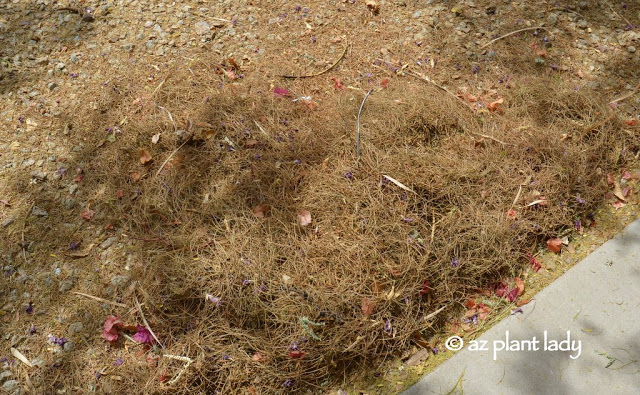
Be Creative with Mulch Components
Let’s take a minute to rethink our definition of what makes an excellent mulch.
While shredded bark and wood chips may come to mind, did you know that fallen leaves, pine needles, and even fallen flowers can also serve as a mulch? That is how nature does it.
Be Cautious with the Leaf Blower
So, the next time you are tempted to whip out your leaf blower, how about directing it toward the base of your plants where the leaves and flowers can serve as a mulch?
They will also help to improve the soil around your plants as they decay.
5. Opt for Succulents and Heat-Tolerant Shrubs in Containers
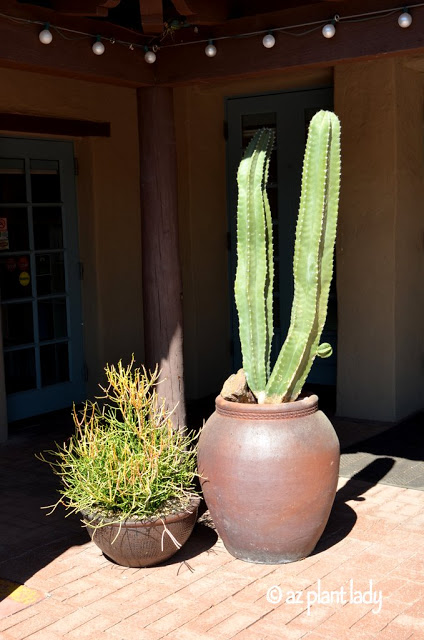
Tip for Heatproof Garden
While growing pretty flowers in containers is relatively simple in fall, winter and spring-summer can be another matter entirely. Often, it can be hard to grow flowering annuals in pots throughout the hot summer.
The reason for this is that the soil around the roots of container plants is hotter than if grown in the ground.
Critical Top Soil
This is especially true for the outer 6 inches of soil which heats up in response to air temperatures and the hot container. As a result, annuals can wilt and struggle to produce flowers in summer.
Succulents are a great way to enjoy attractive container plantings throughout the year, not just in summer. Their ability to store water is what makes them an excellent choice for containers.
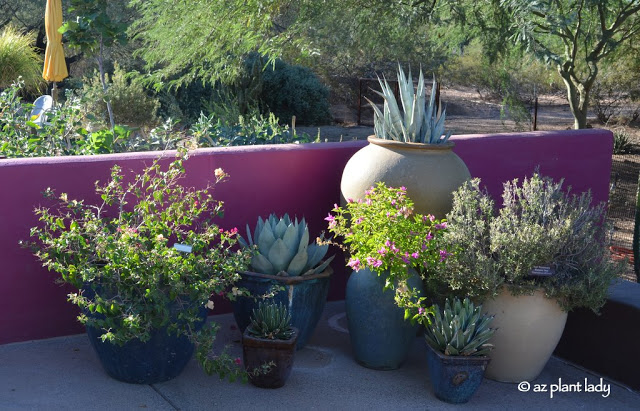
Tip for Heatproof Garden
If you want to grow something else besides succulents, how about trying heat-tolerant shrubs? Bougainvillea does great in pots as does lantana.
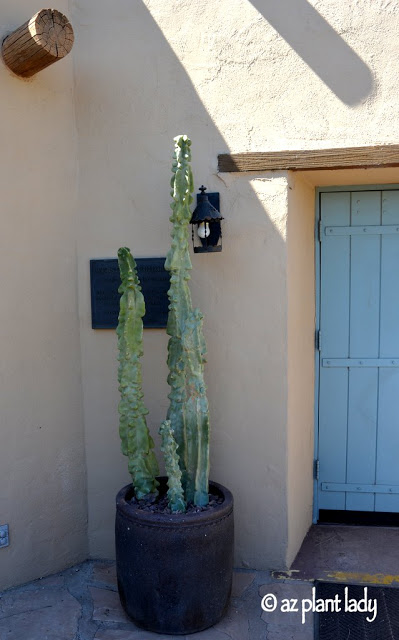
Tip for Heatproof Garden
Caring for Heat-Stressed Plants
Another tip for containers is to leave them empty in the summer months and wait until fall to plant them.
When thinking in terms of growing plants in containers in hot climates, bigger is better – at least 2 feet wide at the top. The larger the pot, the more soil and therefore, more insulation for the roots from the hot outer zone.
So what can you do if you do have plants that are struggling in the heat – particularly during a heatwave?
Other than replacing them, you can provide them with temporary shade such as a patio chair strategically placed so that it protects it against the afternoon sun. A light spraying of water over the plant and surrounding area in the evening can help reduce the temperature – don’t do this when the sun is out, or you may burn the foliage.
How to Help Your Plants Survive a Heatwave


